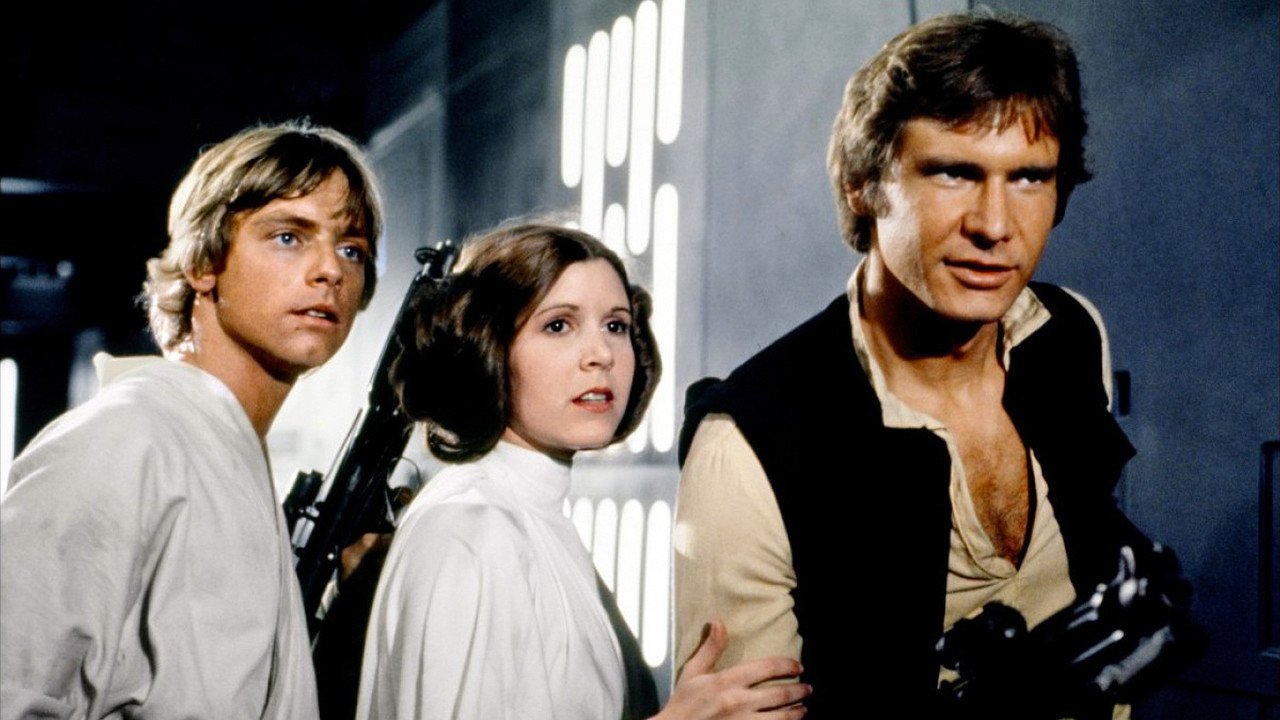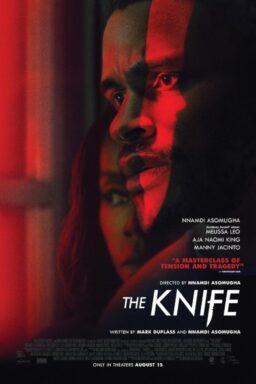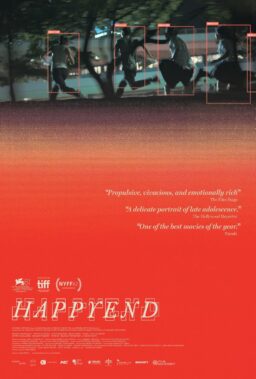With today marking the 40th Anniversary of the original “Star Wars,” there will surely be a myriad of marathons running throughout the weekend. As for myself, I had a binge-watching experience of my own last weekend when I decided to watch all eight films in one day, starting at 6am and ending right around midnight. I’m a fan, of course, but I also wanted to see how the films played out as a whole now that we have two additions to the saga that exist outside of the George Lucas canon, with plenty more on the way. Does it still work as a whole piece when you throw in “Rogue One: A Star Wars Story” in between “Episode III” and “Episode IV”? Can we now look at “Star Wars” the same way we look at a TV series on Netflix, as something to binge-watch over the course of an entire day?
Lucas has always said that the films are meant to be watched in numerical order, but most people don’t abide. Ask a group of young “Star Wars” fans how they first saw the films, and most will tell you their parents turned them onto it by showing them “Episode IV: A New Hope” first, then “Empire Strikes Back” and “Return of the Jedi.” So, the prequels, by and large, remain just that: An extended and not entirely necessary flashback. This goes against Lucas’ intentions, but try showing “The Phantom Menace” to someone under the age of 10 and see if they really get caught up in the plot. Yes, there is a child at the center of the story (played by Jake Lloyd), but the political material that bogs down the second half becomes a real test of patience for any discerning viewer who wants more than just annoying CGI creatures to hold their attention. Story does matter and it’s important to make clear definitions of good and evil for a young viewer. “The Phantom Menace” doesn’t really have that and the opening scroll—which involves such grown-up things as trade federations and taxes—doesn’t help much.
For a first time viewer, Lucas’ saga fails to give viewers a reason to care enough to continue onto Episodes II and III, so the binge-watch activity has lost all of its meaning. “Star Wars, Episode II: Attack of the Clones” is even more of a slog (at least “Star Wars, Episode I: The Phantom Menace” has the cool pod race scene), thanks in large part to the dreadful romance involving Padme (Natalie Portman) and Anakin Skywalker (Hayden Christensen). The most frustrating aspect of these two films is the missed opportunity to delve deep into Anakin’s anger. To keep the binge-watchability of these two films, Lucas should have made a bigger deal out of having Anakin being taken away from his mother by the Jedi. It should scar him for life. The emotions should be high. It’s a boy being taken away from his mother! The seed of Anakin’s resentment toward the Jedi should be planted right there. The last shot of “The Phantom Menace” should be Anakin, not standing proudly while everyone basks in the glories of a hard-won battle, but as a broken boy, a poor soul who knows he made the wrong choice, but cannot turn back.
Instead, when we watch Anakin kill dozens of bystanders in a fit of rage once his mother has died in “Attack of the Clones,” it is out of a sense of powerlessness to keep her from dying—basically, greed for more power—and not out of anger at the Jedi for taking him at such a young age from his mother. If he had stayed with her, might she still be alive today? What a burden for poor Anakin to carry with him and what a perfect time for Chancellor Palpatine to take advantage of Anakin in this moment of vulnerability. Instead, “Episode II” ends with his marriage to Padme. It is a forbidden marriage, but do we really care if they can get away with it? The issue is hardly ever raised later on anyway.
Thankfully, there comes a point in “Star Wars, Episode III: Revenge of the Sith” where Lucas corrects some of his mistakes and the prequels end on a high note. Supposedly, Lucas brought in Tom Stoppard to do some drafts. I don’t know if that is true, but the scene in which Palpatine and Anakin watch a bizarre performance piece while talking about a previous Sith lord has no trace of Lucas prose. The scene is too well-written. It is the moment where the prequels turn a corner and becomes a series of substance. Anakin’s downfall has more believability, more tragedy and the moment that the Darth Vader mask gets affixed to his burns on his face is positively haunting. The final shot, that of Owen and Beru, holding their baby nephew—a symbol of hope for the future—is the perfect way to close this series and bring the viewer back home. For a first time viewer, it finally gives a reason to keep watching this series of films. It just takes about 6.5 long hours to get to that point.

To go in chronological order of events at this point and to move ahead with “Rogue One: A Star Wars Story” (commonly referred to as “Episode 3.5”) is to really throw a wrench into the proceedings. Director Gareth Edwards has fashioned a tale that exists completely at odds with Lucas’ aesthetic as a director and storyteller. We go from every frame being stuffed with CGI creatures and slick backgrounds to more desolate, natural settings; from operatic dialogue to nuance and earned emotions; from static shots to steadicam; from John Williams to Michael Giacchino. Also, no opening scroll. It’s as if the Star Wars universe just got completely nuked. While it does feel like sweet relief once the prequels have ended, “Rogue One” takes too long to feel like we’re still in the “Star Wars” universe and therefore does not work in this particular spot. We have all seen extended flashback or sidebar episodes on shows such as “Breaking Bad” and “Lost” and they usually work as a part of the whole piece because the aesthetic remains. Edwards tries mighty hard to marry his story with Lucas’ in the last act, but in the context of a binge-watch, it is an awkward transition and “Episode IV: A New Hope” suffers a bit because of it.
Don’t get me wrong. I like “Rogue One” a lot. It’s a film I admire more and more every time I see it. But once I started “Episode IV” immediately thereafter I felt like I had been gone from “Star Wars” for a while. Even though it threw references at me for the upcoming film—such as Walrus Man’s cameo and the eerie re-creation of Peter Cushing as Grand Moff Tarkin—”Rogue One” did not feel like an organic part of this series in the context of a binge watch. Jumping back in with “Episode IV” felt like coming back from a long smoke break. And yet, going from “Episode III” to “Episode IV” might have the same feeling as “Rogue One,” for here was Lucas 40 years ago, starting out with a smaller budget and with little support from his crew in London or the studio, for that matter.
Again, we go from slick, contemporary, overstuffed CGI to everything being tangible and with clear definitions of good and evil. It’s a bit jarring, but Lucas’ dialogue and visual ideas helps keep the transition smooth enough so that it still feels like the same universe. It is especially awkward if you opt to watch the film in its original form (as I did) instead of the 1997 Special Edition. The 1977 version, after all, is the version many of us saw 40 years ago, so I went with it for the sake of the anniversary. I have seen the Special Edition many times and I realize part of its purpose is to make the series look more contemporary, but Lucas only partially succeeded in his endeavor. While some of the scenes have a more contemporary feel because of the CGI, there is still the matter of a CGI Yoda vs. a puppet Yoda. I know which one I prefer. And while we’re on that subject, one of my favorite story points that comes about when watching all the films is seeing Yoda going from a humorless, all-knowing sage in the Prequels to a completely mad loon who has been in exile a little too long when we first meet him in “Episode V: The Empire Strikes Back.”
Back to the point at hand: does the end of “Episode IV” make you want to keep watching? It’s not for me to say at this point because I was born in 1972 and this series has been a part of my life since I was at least six years old. “Episode V,” of course, ends with one of the great cliffhangers of all time and cliffhangers are most important for a great binge-watch. It is also worth noting that even though “Episode V” and “Episode VI: Return of the Jedi” had different directors at the helm (Irvin Kershner and Richard Marquand, respectively), they did not make any radical departures from Lucas’ original vision. Kershner was clearly more of an actor’s director than Lucas, and that shows, but the spirit of the original remained throughout both films. Marquand showed up to do a job, but Lucas had to guide him through many of the more challenging set pieces and special effects.
In Richard Linklater’s “Boyhood,” the father and son chat about whether or not there will be any new “Star Wars” films. They both come to the conclusion that once “Episode VI” ends, what else is there to say? Fast forward a few years after Lucas sold off “Star Wars” to Disney and now we have a new “Star Wars” movie every year. JJ Abrams’ “Star Wars, Episode VII: The Force Awakens” attempts to continue the “Star Wars” saga through newer, younger characters who have never been a part of Lucas’ vision. Abrams’ film exists in the spirit of the Original Trilogy and finds the balance between CGI and practical effects. It is a lovingly crafted film that holds up on repeat viewings, thanks in large part to the talented cast and the return of screenwriter Lawrence Kasdan. In the binge-watch context, though, it feels like a new series. It doesn’t feel like a real “Episode VII” and perhaps that is why we don’t see the episode number on the poster. These new films are not quite “Episodes” any longer. Those belong to Lucas.
“The Force Awakens,” though, brings to mind another argument that circulates among the fans, that of what is considered “canon.” There are many who argue that “The Force Awakens” is not canon, that it is simply overblown fan fiction. I, for one, prefer not to get caught up in that argument. I prefer to debate the merits of each film as a film. Lucas has made some pretty wrong-headed choices regarding his beloved franchise that I wish did not result in anything canon. Abrams may have taken some liberties with his story and Lucas’ ideas and characters, but he made a much better film than “Attack of the Clones” could ever hope to be. Furthermore, it ends with a great cliffhanger that makes me want to keep watching.
Binge-watching the entire “Star Wars” saga can be quite an undertaking. I have watched the Original Trilogy in one sitting before. That’s easy. For this, I had to vary each film to keep it a bit more interesting. Here’s how I did it:
6:00am – “The Phantom Menace” (in French, with English subtitles. Kinda helped, but not much)
8:15am – “Attack of the Clones” (with cast and crew commentary track, in hopes of some form of enlightenment. Kinda helped, but not much)
10:35am – “Revenge of the Sith”
12:50am – “Rogue One.” For this, I took my app-controlled BB-8 toy and watched the film with the BB-8 sitting next to me and reacting to the film. It’s a new feature on the app and it’s pretty fun listening to it get scared and excited as the film goes on.
3:10pm – “Star Wars.” The original 1977 version. It’s out there if you know where to look.
5:30pm – “The Empire Strikes Back: Special Edition.” Nothing wrong with the Special Edition of this film.
7:45pm – “Return of the Jedi: Special Edition” with commentary by Lucas, Ben Burtt, Dennis Muren and Carrie Fisher. Not nearly enough Fisher on here, which disappointed me.
9:55pm – “The Force Awakens.” Again, I watched it with the BB-8.
Matt Fagerholm also had a neat idea that I’ve always thought about doing of watching the Original Trilogy, but with “Episode III” in between “Episodes V & VI,” acting as an important flashback episode at a crucial moment. We will all have different ways of revisiting the “Star Wars” saga. Whatever the flaws of the Prequels, the Special Editions or the new films, “Star Wars” continues to be a rich and rewarding universe and series of films that not only entertain and enlighten, but act as the perfect springboard for discussions of art, spirituality, politics, war, fan fiction vs. canon, CGI vs. practical, film vs. digital and audience consumption vs. artist intent. 40 years later, the Force is still strong in this one.
To read all of Roger Ebert’s reviews of the “Star Wars” films, click here.













